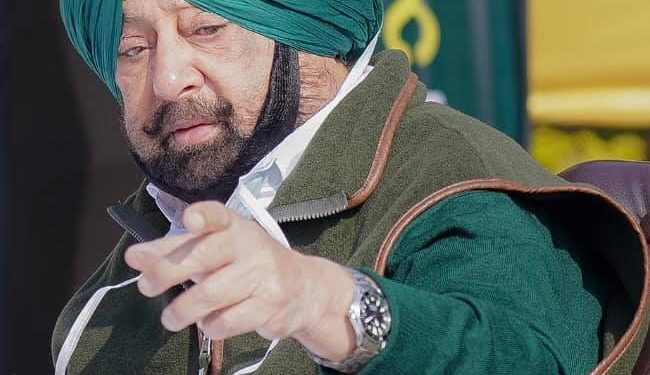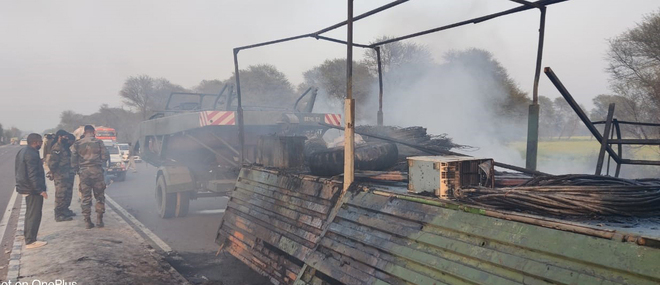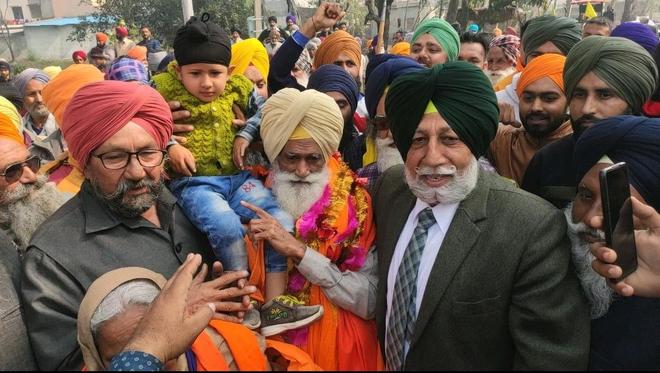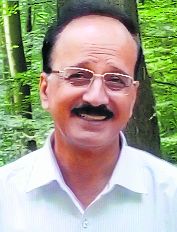Devinder Sharma
Food & Agriculture Specialist
On a cold winter morning, hundreds of tractors had rolled down the streets of Washington DC. This was on February 5, 1979, when more than 900 tractors (some estimates say more than 1,500) had descended on the American capital to protest against policies which depressed farm prices, resulting in declining income, and
to demand a guaranteed farm income to enable them to stay on the farm.
Forty-two years later, the iconic farm movement — unprecedented in recent Indian history — echoes the same sentiments, with almost similar demands.
The American Agricultural Movement (AAM) — as it was called — arose after the 1977 US Farm Bill failed to protect farm prices at a time of surplus food production. While commodity prices continued to decline, farmers found it difficult to cover even the cost of production. This resulted in small farmers increasingly quitting agriculture, and in the process leading to soaring auction of farm lands. Farmers argued that the government was more concerned about keeping food prices low for consumers than caring for farmers. Sounds familiar, isn’t it?
Wheat price for instance, when adjusted for inflation, was lower than what the American farmers had received after the Second World War. Another study showed that adjusted for inflation, the US farm income in 1976 was less than the annual farm income during the Great Depression years in the 1930s.
It was then that a group of farmers met at Campo, in Colorado, and decided to launch a series of strikes across state capitals to show how the rural family structures were crumbling, increasingly leading to agricultural population declining to obscurity. Using the tractor as a symbol of farm discontent, thousands of tractors were used in the next two years to demonstrate in the state capitals. These tractor demonstrations — which began to be known as Tractorcade — helped take the message of agrarian distress to the urban population, which knew little about the economic disparities plaguing rural America.
According to the US Senate Committee on Agriculture, Nutrition and Forestry, what the farmers wanted was ‘100 per cent parity on domestic and exported agriculture products, all agriculture products contracted at 100 per cent parity, food imports prohibited until domestic supplies were used to fulfil domestic demand, agriculture policy announcements made in advance to give farmers time to adjust production, and a way to give farmers an influence in policy matters’. In other words, American farmers were seeking a price assurance, and even wanted protection at times of trade distortions.
When I look at the demands of the protesting Indian farmers, and compare with what the American farmers were asking for, I see a similarity. While the Indian farmers are not using the word ‘parity’, what they are demanding is an income assurance by way of an assured price. Knowing that farmers everywhere have suffered the brutality of markets, farmers want Minimum Support Price (MSP) to be made a legal right. This will definitely impact trade policy, but that is a small price compared to the loss of livelihood that millions of farmers suffer year after year. When they ask for repealing the three Central laws, which were pushed in without any meaningful consultation with stakeholders, they are in reality seeing a role in formulating future farm policies.
The historic 1979 Tractorcade that stormed Washington DC had attracted farmers from across the country. In an interview, Beverly Anderson, probably the only woman who drove a tractor from 1,300 miles away, recalls: “Sometimes, the tractorcaders were fed by people of the communities where they stayed, and people took notice of them as they drove down the highways. In that respect, their mission was a success — the contacts allowed farmers to tell their stories — that wheat was selling for about the same price as it had at the end of World War II, while production prices increased, that it cost more to put in a crop than they would realise at sale, and that failure of the family farm system would make the country dependent upon imported food.”
Initially, the residents were unhappy, wanted the farmers to be moved out. But then, it so happened that the city was hit with a blizzard and life came to a halt. Public transport was all shut down. It was at that time farmers used the tractors to clear the streets, pull out the cars from under the snow, and take doctors and nurses to hospitals and so on. This helped develop bonhomie with the urban population that began to see farmers as fellow citizens. For several weeks, farmers would drive their tractors daily through various parts of the city appraising people of their plight. Some farmers even stayed back for months.
The then American President, Jimmy Carter, himself a farmer, was sympathetic. “I don’t know of any other group that has suffered more from inflation than farmers,” he had reportedly said. The bureaucracy of course was not convinced. They had more faith in the markets.
As Anderson reminisced: “We were successful in telling the story of the plight of the American farmer. As far as any legislation that helped, not really.”
If only the policy makers had listened to the farmers’ woes, and provided them with at least a guaranteed price, American farming wouldn’t have been left devastated, with farm lands gobbled up, forcing small farmers to move out. Intensive agriculture has destroyed the soil, polluted the groundwater, and chemical pesticides have contaminated the food chain. With the real cost of cheap feed externalised, American agriculture is crying for regeneration. Decades later, the headline of a Time cover story (November 27, 2019) says it all: “They’re trying to wipe us off the map’. Small American farmers are nearing extinction.”
There are lessons here. Free market orthodoxy hasn’t helped increase farm incomes in America, and for that matter, anywhere in the world. It has only pushed small farmers out of agriculture. To make farming an economically viable and sustainable enterprise for small farmers, India needs to carefully listen to the protesting farmers. There may not be another opportunity again.














































































